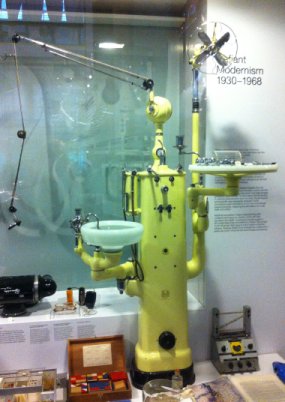

Beginning with the dawn of the Space Age (commonly attributed to the launch of Sputnik in October, 1957 ), Space Age design captured the optimism and faith in technology that was felt by much of society during the 1950s and 1960s. Whereas Atomic Age motifs and structures leaned towards design fields such as architecture and industrial design, Space Age design spread into a broader range of consumer products, including clothing fashion, and even animation styles, as with the popular television show The Jetsons. Some streamlined industrial designs also echoed the influence of futurism that had been seen much earlier in Art Deco design. Elements of Atomic Age and Space Age design were dominant in the Googie design movement in commercial buildings in the United States. There are similarities between many Atomic Age designs and the mid-century modern trend of the same time.

These botanic designs influenced later Atomic Age patterns that included repeating organic shapes similar to cells and organisms viewed through a microscope. British designers at the Council of Industrial Design (CoID) produced fabrics in the early 1950s that showed "skeletal plant forms, drawn in a delicate, spidery graphic form", reflecting x-ray technology that was becoming more widespread and familiar in pop culture. The Space Age interests of the public also began showing up in Atomic Age designs, with star and galaxy motifs appearing with the atomic graphics.įree-form biomorphic shapes also appear as a recurring theme in Atomic Age design. The geometric atomic patterns that were produced in textiles, industrial materials, melamine counter tops, dishware and wallpaper, and many other items, are emblematic of Atomic Age design. Science became more visible in the mainstream culture through Atomic Age design.Ītomic particles themselves were reproduced in visual design, in areas ranging from architecture to barkcloth patterns. People were ever-aware of the potential good, and lurking menace, in technology.

It held great promise of technological solutions for the problems facing an increasingly complex world at the same time, people were fearful of a nuclear armageddon, after the use of atomic weapons at the end of World War II.

Atomic power was a paradox during the era. Abstract organic forms were identified as a core motif in the 2001 exhibition of Atomic Age design at the Brooklyn Museum of Art, titled "Vital forms: American art and design in the atomic age, 1940–1960".


 0 kommentar(er)
0 kommentar(er)
